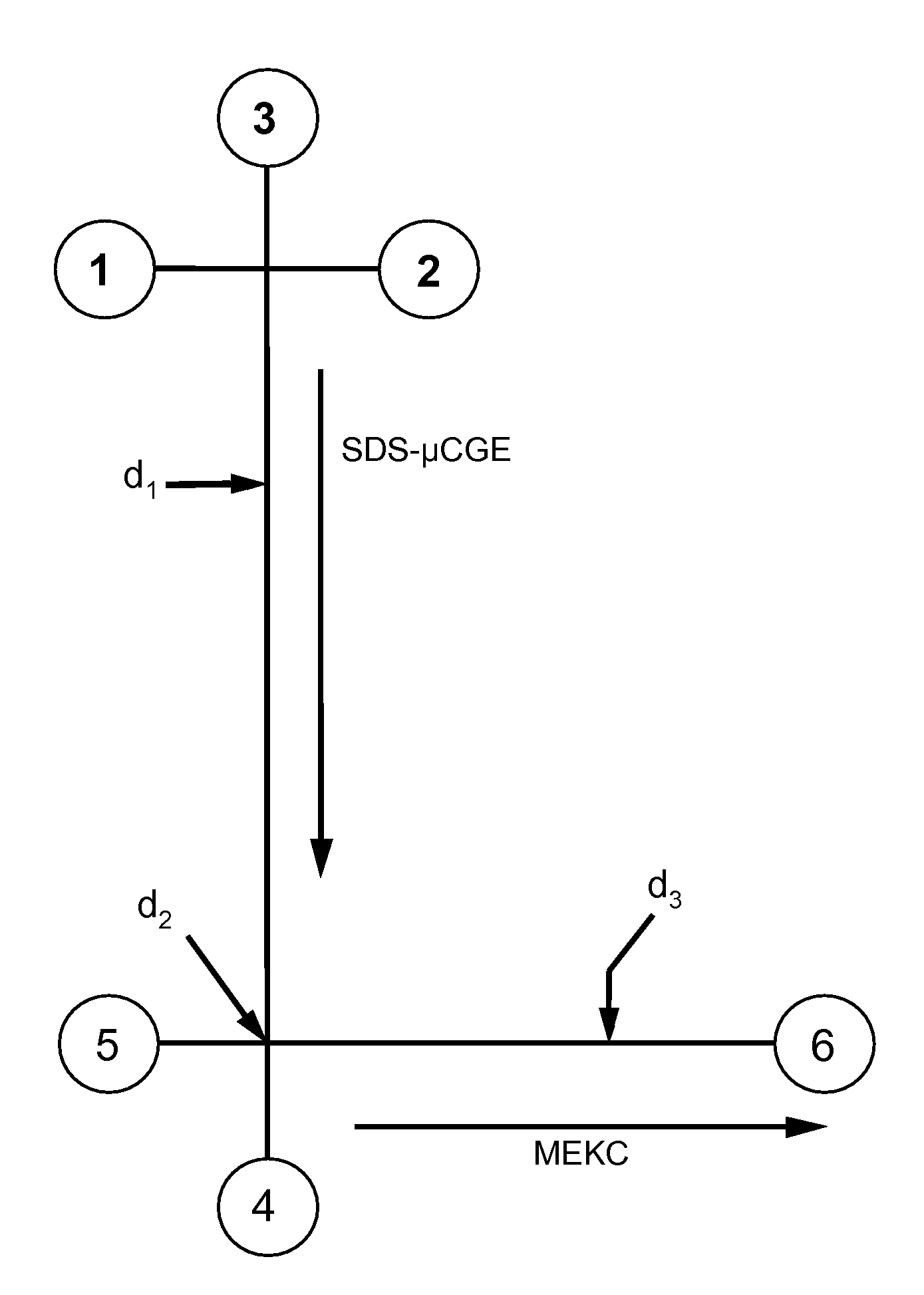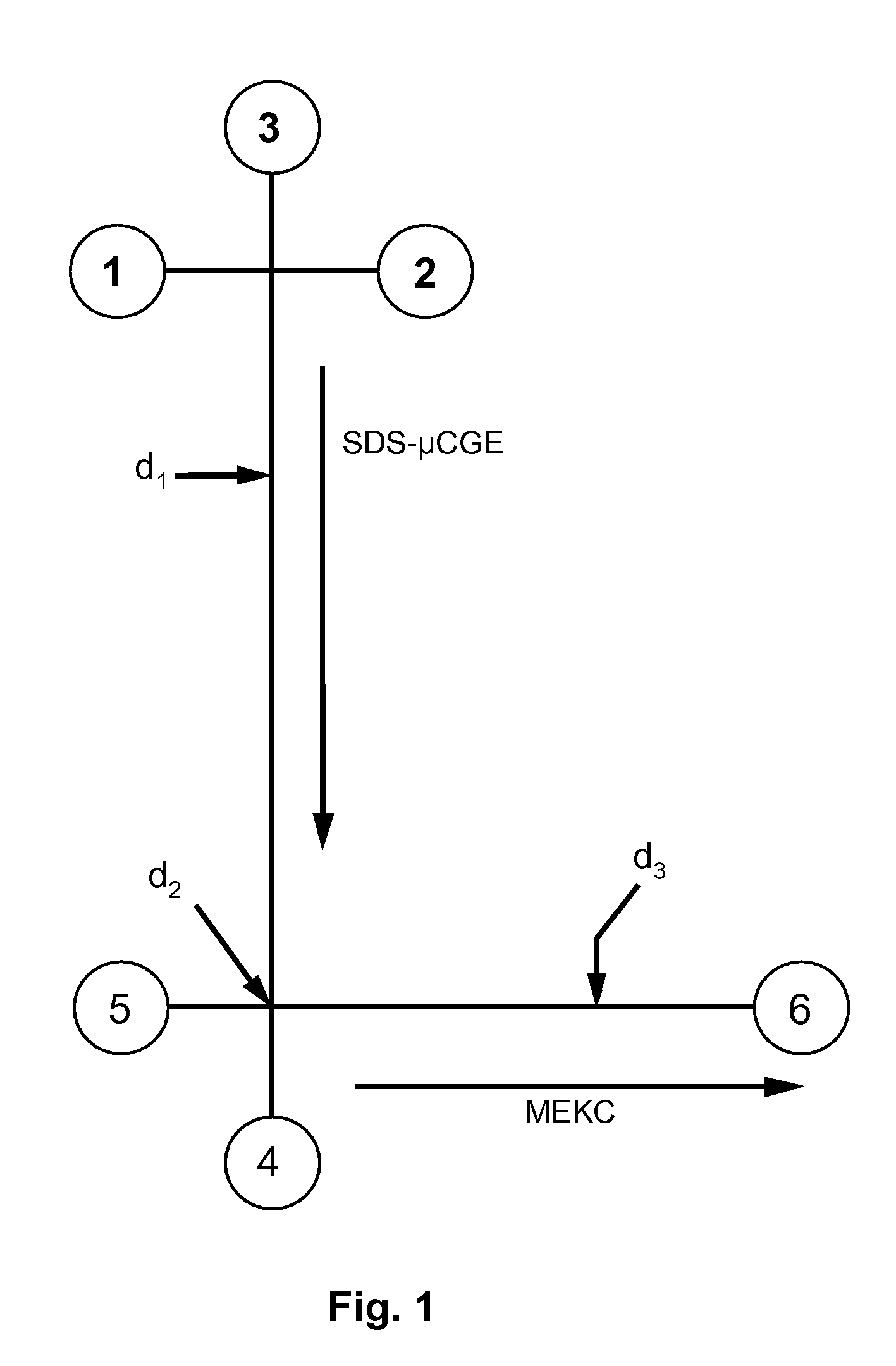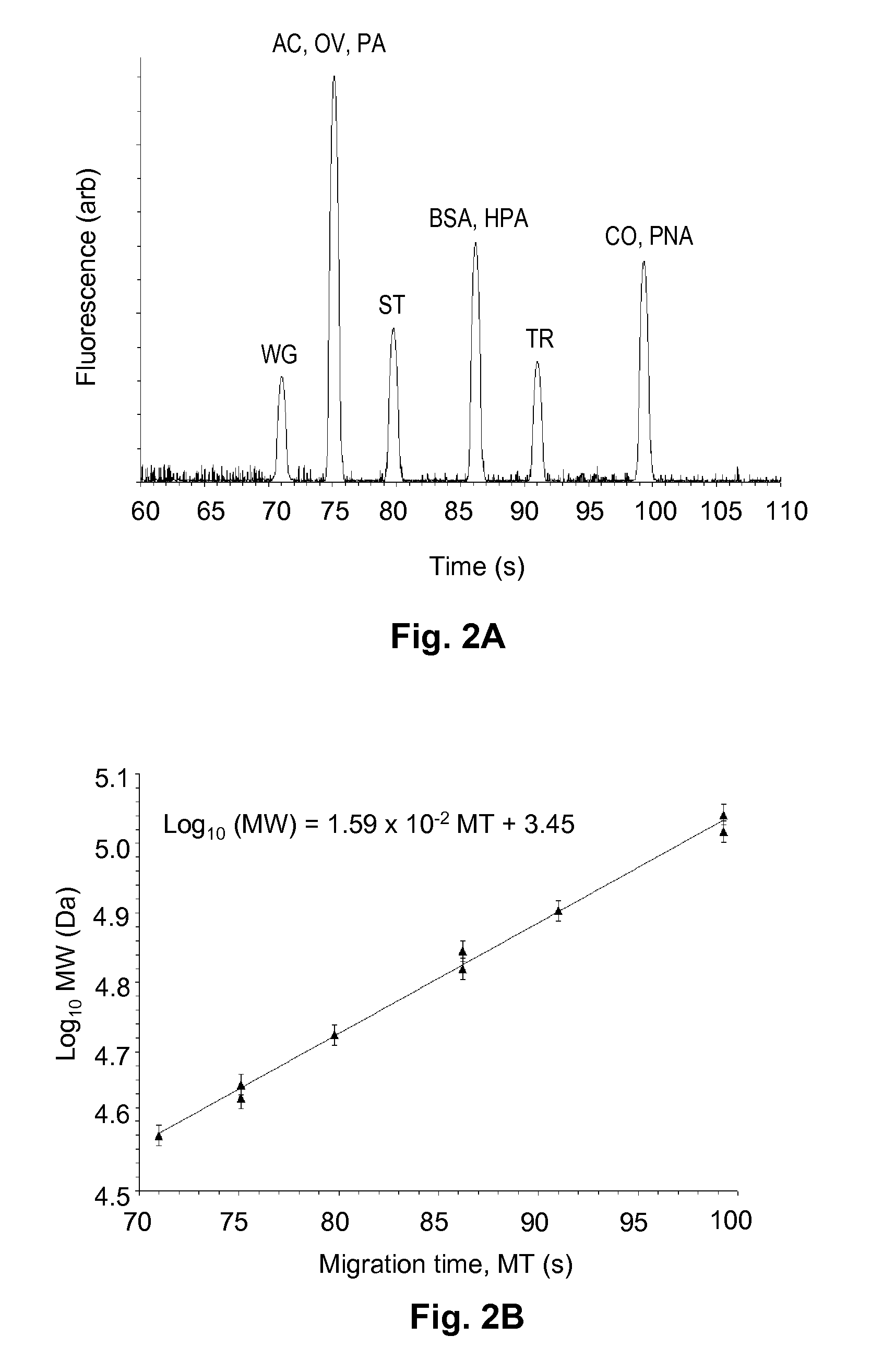Polymeric Nanopillars and Nanotubes, Their Manufacture and Uses
- Summary
- Abstract
- Description
- Claims
- Application Information
AI Technical Summary
Benefits of technology
Problems solved by technology
Method used
Image
Examples
example 1
Integrated Protein Analysis System Overview
[0055]There is an unfilled need for a unitary system for profiling proteins, a system in which the processing steps are seamlessly integrated, and whose output may be interfaced to a mass spectrometer or other analytic instrument. One embodiment of the invention employs the novel nanoarrays in an integrated microfluidic system that can select a sub-population of proteins from whole cell lysates and process these proteins directly on-chip, in a fully automated fashion, much faster than previous state-of-the-art systems have been able to achieve. A prototype embodiment of such a system has been fabricated via micro-replication technologies in PMMA. PMMA was chosen since its surface may readily be modified chemically, and since it has shown excellent performance in a variety of micro-separation formats. A schematic of the integrated system is shown in FIG. 10. In a preferred embodiment the system includes subunits for the selective capture of ...
example 2
Fabrication of Polymeric Nanopillars
[0060]The fabrication process is illustrated schematically in FIG. 5. Anodized aluminum oxide (AAO) templates were prepared via a two-step anodization process. The AAO templates comprised an Al substrate with an AAO layer having nanochannels open on one end. Methyl methacrylate (MMA) monomer (Fisher Scientific, Pittsburgh, Pa.) containing 1% w / v benzoin methyl ether (Fisher Scientific, Pittsburgh, Pa.), and 1% w / v PMMA (Mw 93,300 and Mn 46,400; Scientific Polymer Products Inc., Ontario, N.Y.; CAT#037Sb) was introduced into the nanochannels of the AAO templates by ultrasonicating (Branson Ultrasonic Cleaner Model 2510) the template and the methyl methacrylate / benzoin methyl ether / MMA solution for 30 min. The sample was then immediately placed on a glass support, either under laboratory ambient atmosphere or under N2, and polymerization was induced by a 30-min exposure to 254-nm UV (15 mW / cm2, DUV Exposure System, ABM, Inc., San Jose, Calif.). Subse...
example 3
Preparation of Polymer Nanotubes
[0061]The AAO template was prepared by a two-step anodization process, followed by removal of the Al support with saturated aqueous mercuric chloride for 5-24 h. Subsequent dissolution of the oxide barrier-layer with 6% wt. H3PO4 at 40° C. for 30 min yielded AAO templates possessing nanochannels with both ends open. A piece of 0.25-mm thick polymer sheet, either PMMA (Goodfellow, Devon, Pa.) or COC (Topas 6013D61 Advanced Polymers GmbH, Florence, Ky.), was placed in contact with the anodic aluminum oxide surface. The assembly was then clamped together between two glass microscope slides using binding clips (ACCO, Lincolnshire, Ill.). The polymer was melted by heating at 230° C. for 10 min under vacuum (170 Pa) in a standard vacuum oven. The polymer / AAO composite was then cooled to room temperature and removed from the glass slide support by soaking the assembly in an ultrasonic water bath. The AAO template pattern was dissolved in 0.6 M H3PO4 solution...
PUM
| Property | Measurement | Unit |
|---|---|---|
| Length | aaaaa | aaaaa |
| Diameter | aaaaa | aaaaa |
| Diameter | aaaaa | aaaaa |
Abstract
Description
Claims
Application Information
 Login to View More
Login to View More - R&D
- Intellectual Property
- Life Sciences
- Materials
- Tech Scout
- Unparalleled Data Quality
- Higher Quality Content
- 60% Fewer Hallucinations
Browse by: Latest US Patents, China's latest patents, Technical Efficacy Thesaurus, Application Domain, Technology Topic, Popular Technical Reports.
© 2025 PatSnap. All rights reserved.Legal|Privacy policy|Modern Slavery Act Transparency Statement|Sitemap|About US| Contact US: help@patsnap.com



